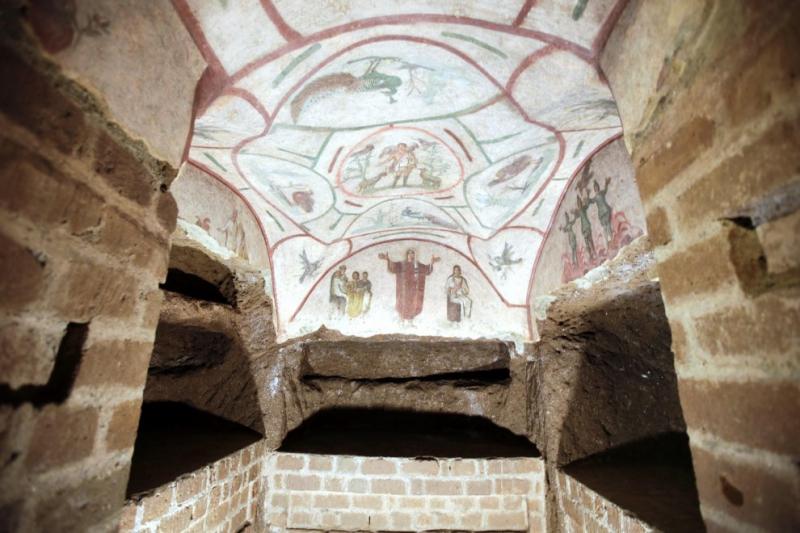The Catacombs of Priscilla, used for Christian burials from the late 2nd century through the 4th century, have reopened to the public after years of restoration.
The series of tunnels run under what was a quarry in ancient Rome, off the Via Salaria’s road. The entrance is through the cloister of the monastery of the Benedictines of Priscilla.
The complex, restored by the Pontifical Commission of Sacred Archaeology, includes a variety of frescoes and sculptures, which will also be viewable online via a virtual Google Maps tour.
The Catacombs of Priscilla were known as "regina catacumbarum" (the queen of the catacombs) because of the great number of martyrs buried within it.
They are divided into three main burial chambers: the arenarium or sand-quarry, the cryptoporticus, for protection against the summer heat, and the hypogeum with the tombs of the Acilius Glabrio family. The noblewoman Priscilla, after whom the catacombs are named, granted the Church use of the property; she was a member of the Acilius Glabrio family and is commemorated as a benefactor of the Christian community in Rome.
The walls and ceilings display decorations illustrating Biblical scenes, saints and early Christian symbols. Particularly notable is the "Greek Chapel" (Cappella Greca), a square chamber with an arch containing 3rd century frescoes generally interpreted to be depictions of Old and New Testament scenes. The catacombs also contain the oldest known Marian paintings, from the early 3rd century.
The Catacombs of Priscilla were rediscovered in the sixteenth-century, when a large portion of their funerary inscriptions, sarcophagi, stones and bodies, presumed to be those of martyrs, were taken away; nevertheless, the catacombs still preserve some particularly beautiful and important paintings, which visitors can admire during the visit.
For more information, visit: http://www.catacombepriscilla.com/inglese/











